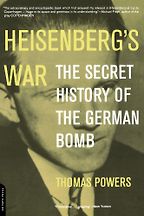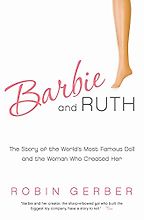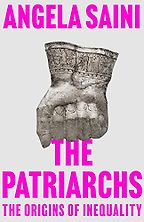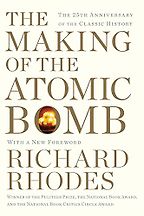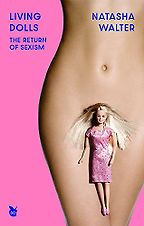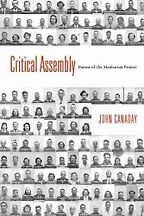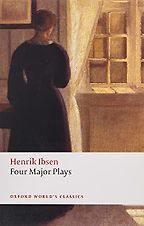Barbenheimer Books
Last updated: September 10, 2025
If you're a bookworm, it's hard not to see everything through the prism of books and the appearance of the Barbenheimer phenomenon this summer has been no exception. (If you've been avoiding social media: Barbenheimer is a 'portmanteau' word, combining two blockbuster summer movies: Oppenheimer and Barbie). Below, we've collected together books about either Barbie or Robert Oppenheimer that have been recommended on Five Books, as well as the highly readable, Pulitzer Prize-winning biography on which the Oppenheimer movie was based. #Barbenheimer #ReadingList
“As a science student, you grow up with these names. These guys have their fingerprints all over quantum theory and relativity: Einstein, Bohr, Schrödinger, Heisenberg, Oppenheimer. You’ve got all of these people making tremendous contributions to the structure of physics…It always struck me as quite extraordinary that these same people then found themselves embroiled in a project to build the most horrendous weapons that mankind has ever seen.” Read more...
Jim Baggott on Writing about Physics
Jim Baggott, Science Writer
Barbie and Ruth: The Story of the World's Most Famous Doll and the Woman Who Created Her
by Robin Gerber
Barbie and Ruth is about Ruth Handler, co-founder of Mattel and creator of the Barbie doll. The book opens with her appearance in court, in December 1978, on charges of financial fraud. This is the story of an extraordinary and determined entrepreneur. Barbie was named after her daughter, Barbara, and was partly inspired by a display of dolls they saw on a holiday in Switzerland. After she resigned from Mattel, Ruth went on to create a breast prosthesis for women who, like her, had had a mastectomy for breast cancer.
American Prometheus: The Triumph and Tragedy of J. Robert Oppenheimer
by Kai Bird & Martin Sherwin
🏆 Winner of the 2006 Pulitzer Prize for Biography
American Prometheus returned to bestseller lists in the wake of Christopher Nolan's movie about J. Robert Oppenheimer. The movie is long, as is the book (700+ pages) but it is highly readable. The scariness of the weapon Oppenheimer ended up creating gives the book a built-in narrative momentum as you read about his German Jewish background, his schooling in New York and holidays in New Mexico, into the major events of his life.
“American Prometheus by Bird and Sherwin is the gold standard for books about Oppenheimer. It’s the definitive Oppenheimer biography—and I say that as the author of one myself.” Read more...
Books about J Robert Oppenheimer (to Read After the Movie)
Mark Wolverton, Science Writer
The Patriarchs: How Men Came to Rule
by Angela Saini
“The Patriarchs is fantastic. Angela Saini is a science journalist and it’s a very detailed study and look at feminism over time with an interesting bent. Different women through the ages haven’t understood in the way that power has arisen and the way that we moved from a matriarchal society, thousands of years ago, to a patriarchal one. Again, it’s the long sweep of history, but with a very political endpoint. Why have we ended up here? Why do we live in a patriarchy now when we haven’t at moments in history? What’s happened? I’ve read so many books on this subject, but I love this because of its fabulous combination of real detail about some really interesting cultures centered on women, but again, with a very strong political message.”
“This is, of course, the gold standard for that story. It won a Pulitzer Prize, a National Book Award and a whole bunch of other awards. And even though it was published in 1986, it still holds up. I’ve written a lot about nuclear weapons and atomic bombs, so I’ve read basically every book that’s available on it—from the earliest postwar stuff to the present—and Rhodes is just the master at putting it all together. He tells the entire story, from its very beginnings in quantum physics in the early 20th century, and even before that, and how it developed into the atomic bomb. All the figures are in there, all the important physicists. He’s also masterful at explaining the science…If you’re going to read one book on the atomic bomb, that’s the book to read.” Read more...
The best books on The History of Physics
Mark Wolverton, Science Writer
“A lot of the book is about how women are being told or believing that they’re making decisions about their bodies, what they look like, and how they display their sexuality. It’s their choice. It’s freedom. But, actually, lots of forces are making them feel like they need to look like Barbie. We’ve kept the cover image from the original publication because it felt hard to beat. The image is playing with the physical ideals that you get from pornography—this aesthetically perfect, white, slim woman who I don’t think has ever had kids and is fully waxed—and the Barbie hair.” Read more...
The Best Feminist Books: 50 Years of Virago Press
Sarah Savitt, Publisher
“Canaday’s book is divided into three parts. One part is poems about the pre-war situation, the lead-up to World War Two and the early nuclear physics experiments. Then the main part of the book is poems about the activities at Los Alamos, largely. The last part is about the lead-up to and consequences of Trinity, the first test of a nuclear weapon. What’s fascinating about these poems is every poem is named for a person, and the poem is written in that person’s voice. For example, J. Robert Oppenheimer appears three times. Einstein twice. Kitty Oppenheimer four times, Edward Teller five times. There are many others as well who appear two or three times in the book as the names of poems, and then they’re speaking…it’s just a fascinating, fascinating look at the Manhattan Project from a poet’s point of view.” Read more...
Richard Wolfson, Scientist
“As I got a bit older and started reading things that were more literary, two things stuck in my mind. One was A Doll’s House by Henrik Ibsen, which I helped dramatize in high school when I was about 15. And the other was Who’s Afraid of Virginia Woolf, which I discovered at about the same age. And what those two plays have in common is their very dark view of marriage…A Doll’s House is not quite as dark. The notion is that a marriage is anti-feminist. That this woman, Nora, becomes free when she leaves her marriage, that leaving it is a statement of liberation. And in the 1970s that made an immense amount of sense to me. So that’s where I began, with an oppressive, dark view of marriage. And by the way, these are all very powerful works of art: very, very influential on anyone who sees them” Read more...
Jonathan Rauch, Journalist
